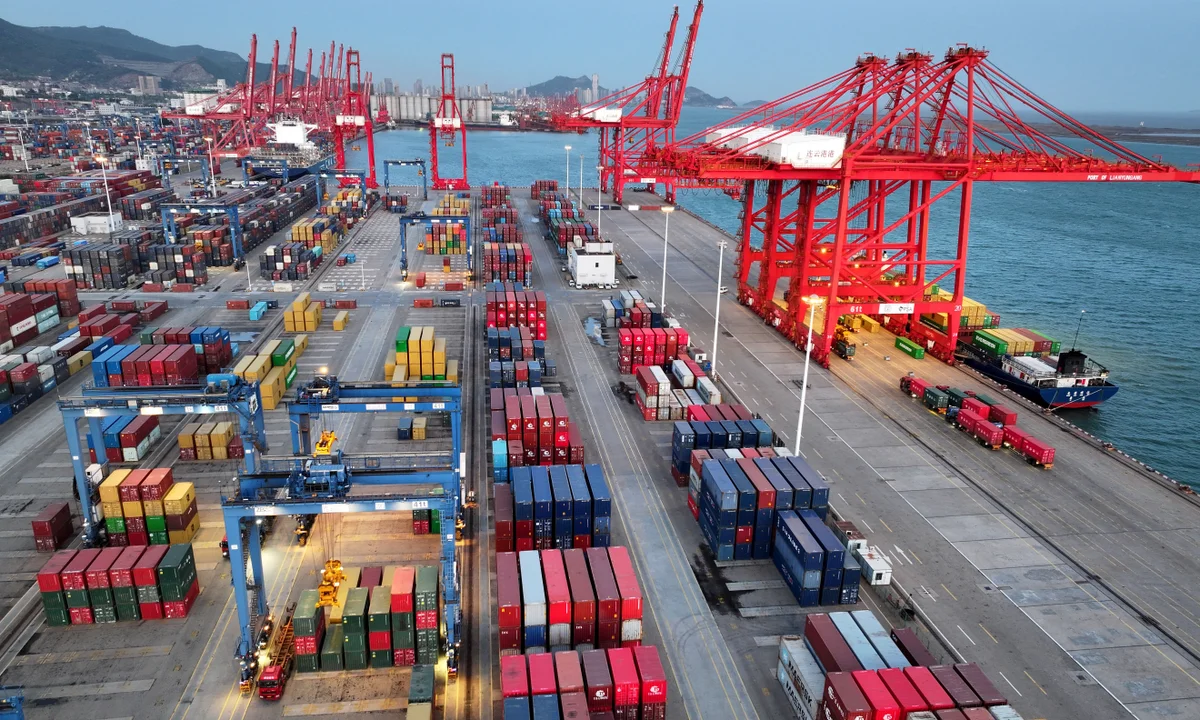U.S. Freight Market Enters a Structural Downturn as Chinese Imports Collapse
U.S. Freight Market Enters a Structural Downturn as Chinese Imports Collapse
By
David Goldfarb
Last updated:
November 21, 2025
First Published:
November 21, 2025

Photo: The Guardian
The U.S. freight industry is undergoing a sharp and sustained contraction, and leaders across the logistics sector warn that the downturn is far more serious than a typical seasonal slowdown. Import volumes are falling, freight rates are weakening, and consumer demand for physical goods continues to soften. Combined with the impact of tariff policy and the long-delayed release of government trade data, the entire supply chain is now showing broad signs of stress.
Chinese Imports Fall and Port Volumes Slide
Mario Cordero, CEO of the Port of Long Beach, says the surge in container traffic earlier this year — fueled by companies rushing to beat tariff deadlines — has now reversed. According to port data, Chinese imports into the U.S. have dropped by 16 percent, a broad decline that is affecting multiple categories, including electronics, furniture, and toys.
The latest U.S. Census Bureau numbers show that August imports declined by $18.4 billion from July, following the introduction of new tariffs. This drop contributed to a more than 23 percent reduction in the nation’s trade deficit. Ports across the West Coast are feeling the shock: the Port of Los Angeles reported a notable decrease in October container volume, while Long Beach continues to experience significant softening in inbound freight.
Despite global containers to the West Coast being up 10 percent year over year — a result of earlier frontloading — the current trend is down. Containers from China to the U.S. West Coast are only up 4.6 percent year over year, and East Coast ports such as Houston show a modest 2 percent overall volume increase while container shipments from China are down 12 percent.
Freight Rates Decline Across All Major Segments
New data from the DAT Truckload Volume Index shows that October marked the first month in 2025 where van, flatbed, and refrigerated rates all dropped both month over month and year over year. Van loads fell 3 percent from September and 11 percent from a year prior. Refrigerated loads were down 2 percent month over month and 7 percent year over year, while flatbeds slipped 4 percent compared to September and 3 percent year over year.
Analysts say shippers are pulling back on freight orders because inventories are already elevated from earlier purchases meant to reduce tariff exposure. Additionally, weak housing demand, cooling manufacturing activity, and higher energy costs all contribute to lower freight volumes.
“With shippers drawing down earlier inventory and consumer demand shifting away from physical goods, the traditional holiday peak season has essentially evaporated,” said Ken Adamo, chief of analytics at DAT.
A Structural Goods Recession Takes Hold
Freight data tracking firms such as Vizion emphasize that the decline in cargo movement is not a temporary correction. Kyle Henderson, CEO of Vizion, warns that the U.S. is experiencing a structural downturn in the goods economy. Container utilization has dropped from 100 percent to 91 percent, and spot rates are at their lowest levels in two years.
“If furniture imports collapse by 33 percent and toy imports barely rise 17 percent ahead of the holidays, retailers are preparing for one of the weakest consumer seasons in years,” Henderson said. He added that the freight sector is entering a decade-long period of overcapacity, with no clear recovery in sight.
Vizion now forecasts a 12 percent drop in U.S. imports for the third quarter and an even deeper 16.6 percent year-over-year decline for December. Advance container projections show 2.19 million TEUs expected to reach U.S. ports this December, down from 2.62 million TEUs last year — a loss of more than 430,000 containers that will reverberate across every segment of the supply chain.
Ripple Effects Throughout the Economy
The downturn is affecting not only ports but also trucking companies, rail operators, warehouses, and labor forces. Reduced freight means fewer working hours for longshoremen and dockworkers at ports such as Long Beach and Los Angeles. Cordero said that lower volumes create job anxiety and fewer daily positions, impacting the earnings of workers who depend heavily on container throughput.
The International Longshoremen’s Association, whose members receive annual bonuses based on freight movement, will also see reduced compensation as overall volumes shrink.
Trade tensions with China are not the only factor. Tariffs on India have significantly disrupted freight flows as well. The Global Trade Research Initiative reports that Indian exports to the U.S. fell by 37.5 percent between May and September 2025. Many Indian shipments now face a 50 percent tariff, reducing competitiveness and limiting trade activity.
Retailers Adjust as Consumers Shift Away from Goods
Retail earnings highlight a mixed picture of consumer strength. Home Depot and Target reported weaker outlooks, while Walmart posted stronger results, driven in part by value-focused consumers and increased spending from higher-income households seeking budget-friendly alternatives.
Retailers and manufacturers are scaling back freight orders as they anticipate a slower shopping season, influenced by inflation in food and consumer goods. With demand weakening and tariffs adding cost pressure, businesses are exercising caution, delaying new orders, and adopting leaner inventories.
What Comes Next
Port executives say the next two months will be pivotal in understanding whether the American consumer can stabilize the goods economy. For now, the data suggests a deeper reset rather than a temporary slump.
As Henderson noted, “This isn’t a volume blip — it’s a major reset of freight demand fundamentals. The freight market is already feeling the pain, and the data shows no immediate rebound ahead.”
Popular articles
Subscribe to unlock premium content
Why Some People Hire Professional Bystanders to Simulate Social Interaction in Public Spaces
.png)
The Rise of Micro-Memorials People Paying to Preserve Tiny Personal Moments in Luxury Miniature Sculptures
.png)
The Market of Paying Strangers to Share Their Most Embarrassing Stories in a Private Setting
.png)
Why Some People Hire Professional Bystanders to Simulate Social Interaction in Public Spaces
.png)
The Rise of Micro-Memorials People Paying to Preserve Tiny Personal Moments in Luxury Miniature Sculptures
.png)
Why Some People Hire Professional Bystanders to Simulate Social Interaction in Public Spaces
.png)








